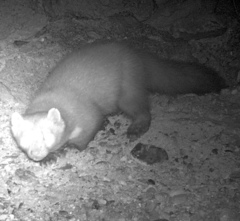Barbary sheep
Ammotragus lervia
Ammotragus lervia, commonly known as the Barbary sheep or "arruí" in the local region, is a species of sheep native to the rocky mountains of North Africa but has also been introduced to other areas, including the Comunidad Valenciana. This fascinating mammal can often be spotted in the rugged terrains and nature reserves of the region.
Characteristics:
- Size and Appearance: Barbary sheep have a robust build with a height ranging from 75 to 110 cm at the shoulder. They exhibit a sandy or reddish-brown coat that blends well with the arid, rocky habitats. Their most distinctive features are the large, backward-curving horns that both males and females possess, although the horns of males are more pronounced.
- Diet: As herbivores, they primarily graze on grasses, shrubs, and lichens, using their ability to extract ample nutrients necessary for survival in dry environments.
- Behavior: These animals are known for their agility and are excellent climbers, capable of navigating steep and rocky slopes with ease.
- Reproduction: Breeding occurs year-round, but typically peaks between September and November. Following a gestation period of approximately 160 days, females usually give birth to a single offspring.
Barbary sheep are a unique addition to the local fauna of the Comunidad Valenciana, providing an opportunity for nature enthusiasts to observe these impressive creatures in their adopted habitats.







